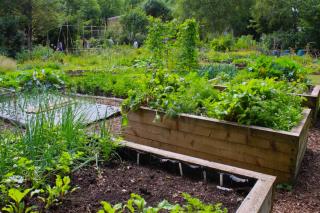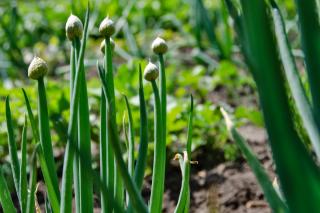

Crop rotation helps generate abundant harvests. It’s also very effective at reducing crop diseases and maximizing nutrient availability for plants.
This simple guide can help you set it up in your vegetable patch!
→ Read also:
Crop rotation is when you don’t grow the same plant on the same plot two years in a row. In the vegetable patch, plants collect nutrients from the soil as they grow.
→ Some plants consume lots of nitrogen, while others absorb phosphorus or potassium.
For instance, tomato will tend to drain soil of most of its nutrients because it requires lots of food. Plants of the Legume family, on the other hand, capture nitrogen from the air and lock it into the soil.
This is only one of the reasons why it makes sense to not plant the same vegetable in the same plot every year. Such planning helps make the most of what each vegetable has to offer. It also decreases pests and diseases, and allows plants to share nutrients in the best possible way.
 Leaf vegetables: these need nitrogen-rich soil. Plants in this group include asparagus, cabbage, spinach, lettuce, herbs, etc.
Leaf vegetables: these need nitrogen-rich soil. Plants in this group include asparagus, cabbage, spinach, lettuce, herbs, etc.What’s most important is to switch the different groups of plants from one year to the next. Split your vegetable patch into four quarters. To make it easier, create square-foot veggie patches since these clearly mark boundaries. It makes it easy to segregate the different growing areas.
In the first year,
A year later, legume family plants will have loaded the soil in their plot with nitrogen: perfect for growing leaf vegetables in their place. The legume family plants completely regenerate the growing medium which the fruit vegetables have just depleted. Fruit vegetables should be sown and grown where root vegetables were in the year before. And root crop veggies are ideal for replacing leaf crops, since they dig deeper for nutrients which were out of the reach for the leaf crops.
The concept of crop rotation really helps optimize nutrient production and consumption. This leads to more abundant harvests.
However, it still is very important to enrich the soil with ripe compost. The amount to be added varies depending on which plants you’re growing. Plan to add this soil booster every year. Another option is to sow green manure in Fall to restore the ground’s reserves.
The plot that will always need a thick layer of compost in Fall is the one where fruit vegetables will grow once Winter is over. It will take the entire winter season for the compost to finish breaking down, preparing the perfect balance of nutrients for seedlings in Spring.
Careful though, not all plants in this group like compost. It runs contrary to what garlic and onion need: no fertilizer for them, or you’ll risk bulb rot. Take a look at the needs of each particular vegetable in order to group those that require the most compost on one side, those that only need a little, and those that will do better without any compost at all.
We’ve just understood the most simple form of crop rotation for healthy vegetables. It’s possible to fine-tune this approach with more sections and sub-plots. For instance, within the root crop group, shallots require neither fertilizer nor water, whereas turnip loves rich and cool soil. Growing these in two different leaf plant plots makes a lot of sense, as long as you keep following the same rotation sequence for both.

Strive to keep it simple: just align everything to a multiple of 4 in order for all the plots to revolve in a similar manner.
Lastly, this technique, while it helps, certainly isn’t mandatory for all vegetables. Some are perfectly capable of growing very well year after year in exactly the same spot. Of course, self-soil-fertilizing beans are in this category, but you can also plant corn and leek in the same area repeatedly and they’ll grow more and more lush.
Prepare your growing beds always in multiples of four (make 4 or 8 beds instead of 3 or 5). That way, you’ll have the basics set out even if you don’t yet completely implement all the possible permaculture techniques.